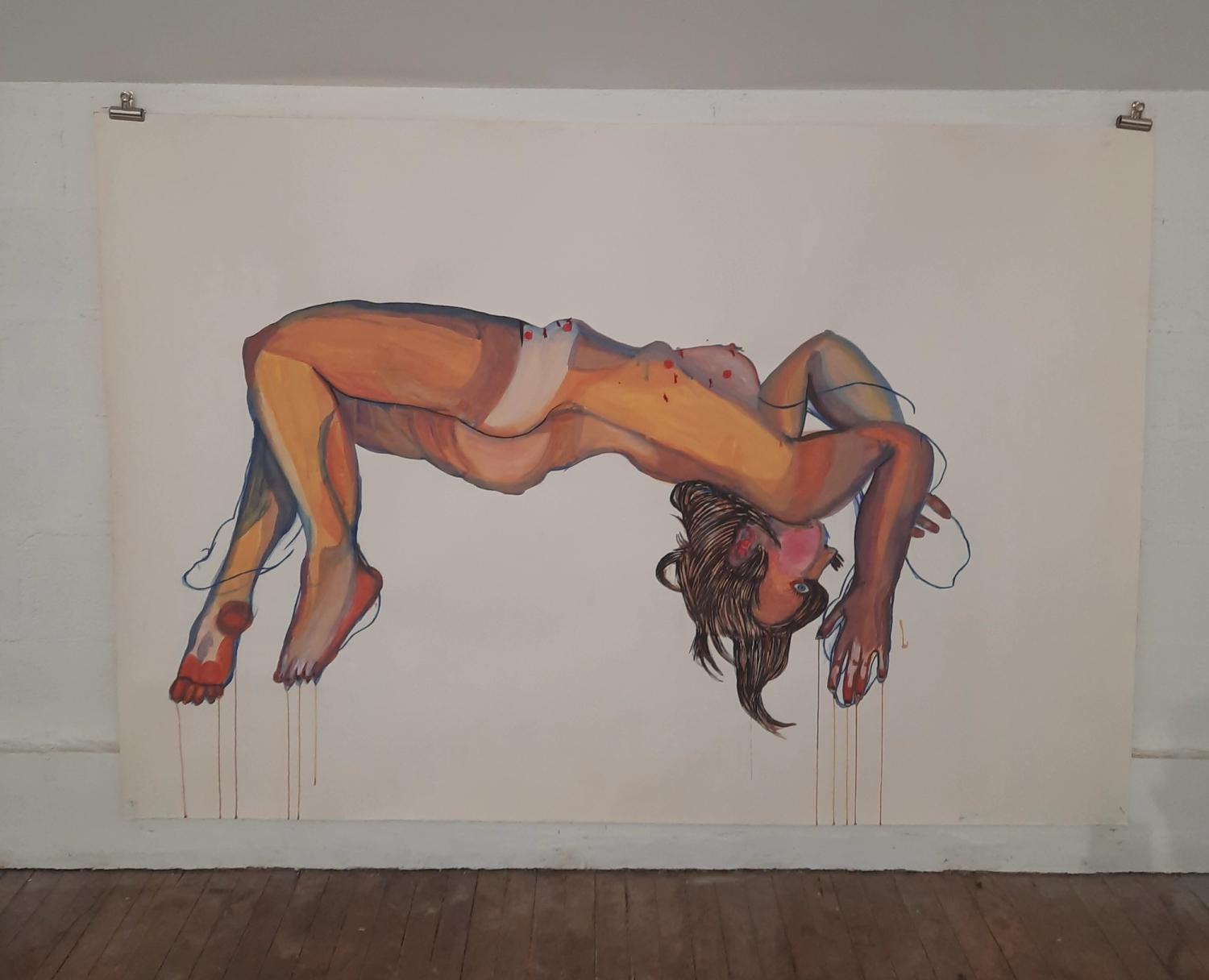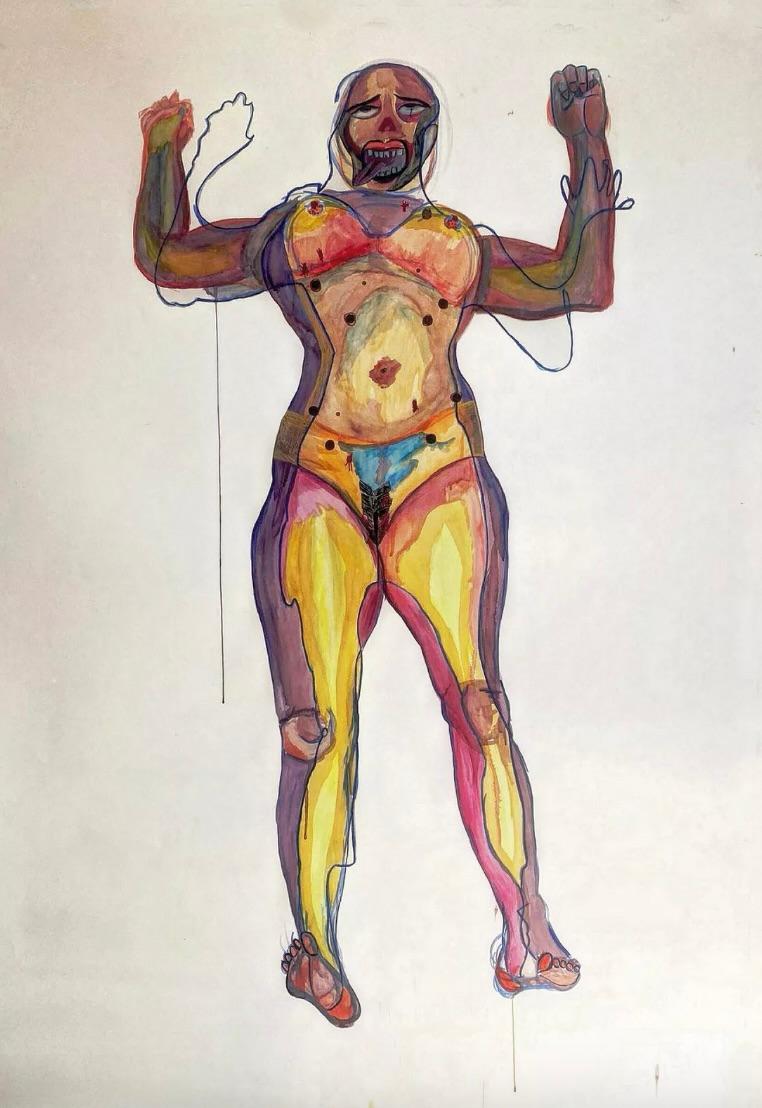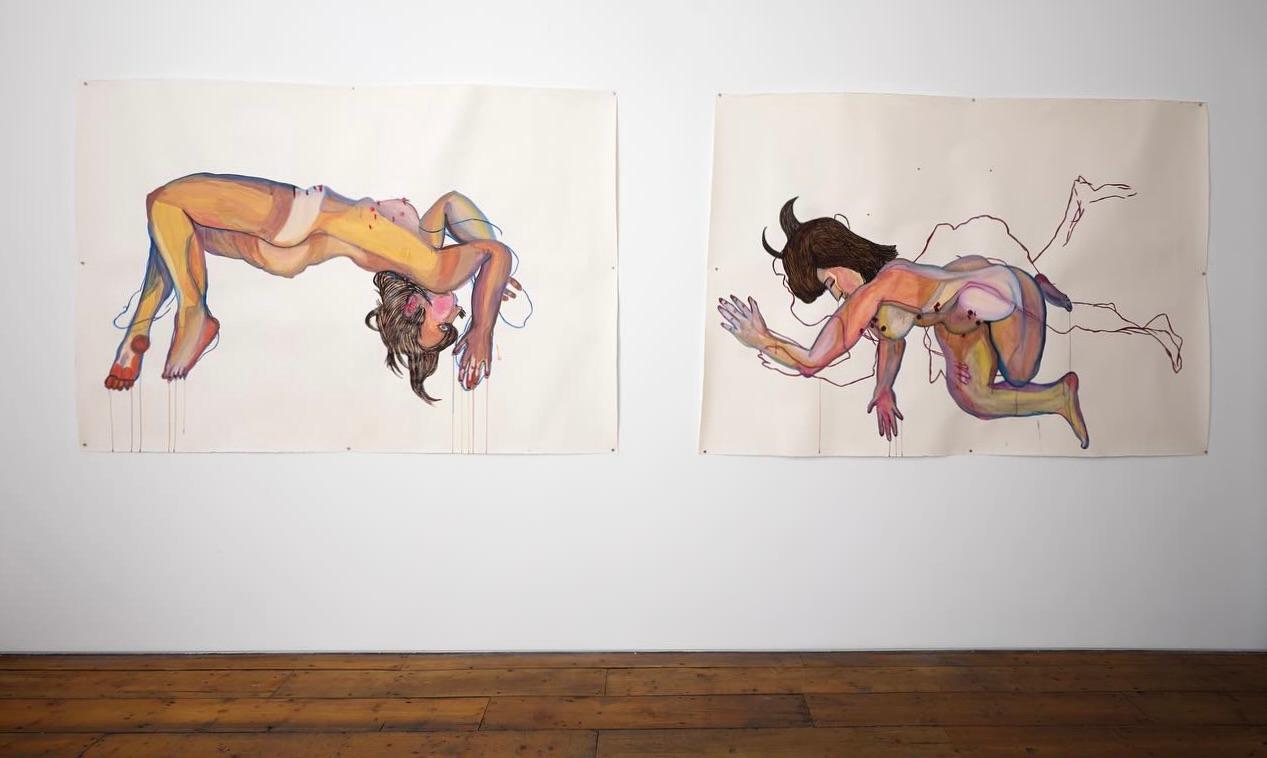Possession

Sprawled out on her studio floor, she fits her fluid shape inside the clean white rectangle of a large sheet of paper. I watch from the corner as a young boy, her son, grasps a pencil and draws her outline, head to toe and back around again. When the line is complete, she pushes herself to her feet, and together she and the boy look down over her body, or at least at its outline — it is a container of nothing, hardly a container at all, an uneven line that feels confident despite its inconsistencies. It captures her form in one moment, but, as the afternoon wears on, I see it is possible to capture it again and again. Soon there are three of her echoes: wobbly lines, each filled with nothingness and contorted across the sheets of paper. Meanwhile, her body, the one that moves, is not filled with nothingness but with adventure and slight trepidation. She exhales and puts her arm around her son, congratulating him on work well done.
I watch as she considers how to fill these containers of nothing. She consults an array of small watercolour paintings of colourful women without faces. She traces the words of books with her index finger. When she leaves the room, I see the spine is bent open, revealing an essay on hysteria and its treatment by a man called Charcot. I read about his three stages of hypnosis: catalepsy, lethargy and somnambulism. The facing page offers three black-and-white photographs of the same woman, her body contorted as though seized by an inner demon. The first, doll-like, wide-eyed and numb. The second, eyes closed and sleep-like. The third, utterly compliant to the hypnotist’s will. I see now that it is the ghosts of this woman that occupy the paper hanging from the studio walls, as though her compulsion, her hysteria, has played out in the artist’s own body and left its marks, imperfectly reproduced, on the fresh white sheets.
I also came into being in the image of things created before. Before I existed, the idea of me was contained in little china figurines that sat on a shelf overlooking her studio. I was born of that idea and of the feelings of adventure and slight trepidation that fill the artist. She mapped out my form in pattern pieces and stitched me together, manipulating my body into its forever pose. The people who visit her studio study me carefully and murmur words of approval and so I keep still, continuing my act of submission from which I have never broken character. Pulling out a chair and offering one such visitor a seat, the artist passes them the book on Charcot and she tells them about the women he treated a long time ago. Once the women reached the third stage of hypnosis, she explains, they became completely suggestible, eager to follow every instruction. The doctor’s treatments became a popular form of entertainment. People travelled to see the women be hypnotised and – she flicked through several pages before landing on some images – look, they were even photographed.

Later, she fills the outlines drawn by her son with fleshy pools and sweeps of paint. While I am composed in vibrant shades, for her own body she chooses bruised purples and sickly oranges. Is this what she feels inside? I wonder if by moving her sickness into these forms, she wants to detach some kind of malign spirit from her body. I am not an artist and this body is all I have. I wonder what it would feel like to be able to push myself outside of my confines, to release something of my essence into a new physical form. I begin to envy her and her release, until I see from the way she watches her paintings that she does not yet feel free, that an invisible tether runs between her moving body and the three static ones. When she leaves the studio, I sense it tugging at her skin and taking root in her thoughts.
When she arrives the next day, she is full of direction and purpose. She takes a pencil and carefully maps out points across each of the three bodies. I recognise them from the hypnosis book: points where pressure can be applied to relieve hysteric symptoms. Once each body is adorned, she removes the paintings from the studio and I am alone for a while.

Some time later she returns and the paintings return with her. I imagine they have been together all this time. While she can leave me, she cannot leave herself, I reflect. And now she is changed, no longer full of adventure and slight trepidation; a sour note dirties the studio air. The three women are riddled with holes, violently torn through the paper. Some pierce the pressure points she marked this morning, others appear almost at random. I watch as she empties a pocketful of shiny metal bullet cases onto a desk before opening a drawer and pulling out the same needle and thread she used on me all those weeks ago. Upon the desk she lays first one, then each of her three forms in turn. She touches their wounds, not with kindness – it seems to me – but a kind of distaste, before slowly, carefully, sewing them back together.
